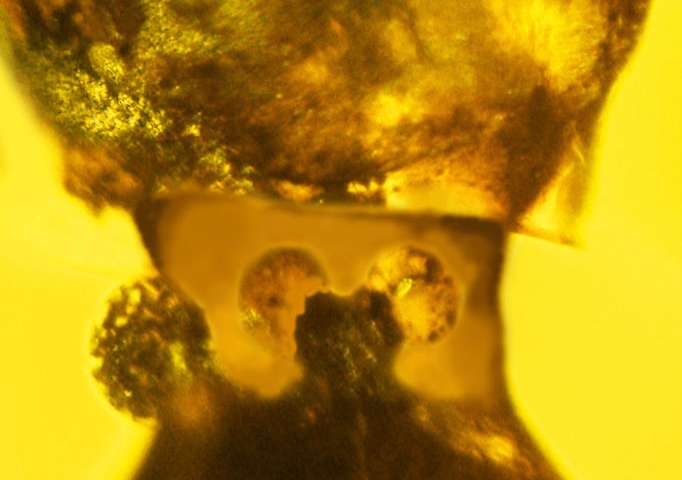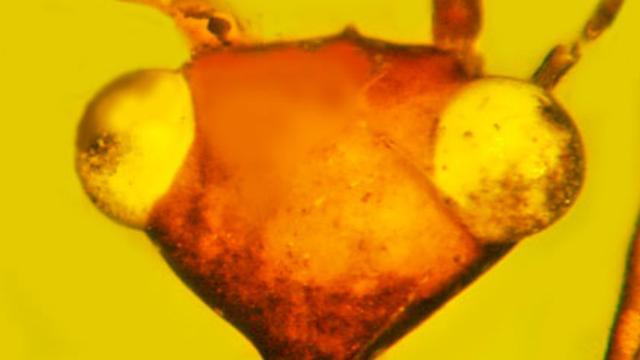
The about million species of insects known to humanity thus far have managed to neatly fit into one of 31 existing scientific orders. However, when George Poinar, Jr., the world’s leading expert on plant and animal life forms found preserved in amber, saw the carcass of this 100-million-year-old insect, he knew it would require its own scientific order – an incredibly rare event.
According to the emeritus professor of entomology at Oregon State University’s College of Science, the insect had many features that did not match those of any other insect species he had encountered. The most prominent were its triangular head and bulging eyes that gave the female bug an “E.T.-like” appearance. To be clear, triangular heads are not unusual in insects. However, it is always the hypotenuse, or the longest side of the right angle, that is attached to insect’s neck. In the case of this mysterious insect, it was the vertex, or the highest point of the triangle, that connected to the neck. This enabled the bug to see almost 180 degrees by simply turning its head sideways.

Poinar and his team, who published their findings in the journal Cretaceous Research in December 2016, believe that the wingless insect was an omnivore that resided in tree bark fissures and fed on mites, worms, and fungi. Its long, narrow, flat body and slender legs, indicate that it could move quickly. The researchers were also able to detect glands on the insect’s neck which they think may have secreted a chemical to repel predators.
The bug, categorized in a newly created order Aethiocarenodea, was named Aethiocarenus burmanicus in honor of the Hukawng Valley mines of Myanmar – previously known as Burma — where the amber was discovered. While the researchers are not sure how the arthropods became extinct, they speculate it was most likely due to the loss of their preferred habitat. Given that scientists have been able to find just one other amber preserved specimen of this alien-like insect, they expect the scientific order to be a very exclusive club with just two members. In comparison, Coleoptera, the largest order to which beetles belong, boasts hundreds of thousands of species.

If you think the Aethiocarenus burmanicus looks scary, you are not alone. Poinar was so intrigued by his find, which “looked so much like the way aliens are often portrayed,” that he created a Halloween mask resembling the insect’s head. However, it was not as big a hit as he had hoped. The researcher says, “When trick-or-treaters came by, it scared the little kids so much I took it off.”
Resources: wired.com, phys.org, sciencedirect.com